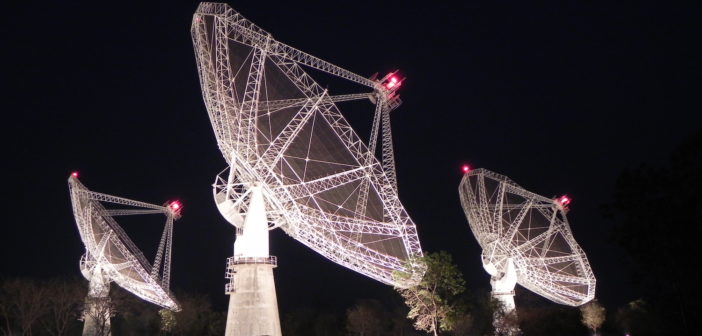Editor’s note: AAS Nova is on vacation until 22 September. Normal posting will resume at that time; in the meantime, we’ll be taking this opportunity to look at a few interesting AAS journal articles that have recently been in the news or drawn attention.
A team of scientists has used the Giant Metrewave Radio Telescope (GMRT) to measure the amount of atomic hydrogen gas — the main fuel for star formation — in galaxies at redshifts of z = 1.18–1.39, or roughly 9 billion years ago. Led by Aditya Chowdhury (National Centre for Radio Astrophysics, Tata Institute of Fundamental Research, India), the team obtained sensitive observations of these distant galaxies with the upgraded GMRT, an array of thirty 45-meter radio dishes located in India.
Star formation activity in our universe is known to have peaked around 8–10 billion years ago before declining steadily thereafter. By probing atomic hydrogen gas 9 billion years ago — the earliest epoch for which we’ve made these measurements yet — Chowdhury and collaborators showed that galaxies at this time contained vast reservoirs of fuel. This outcome supports the idea that our universe’s declining star formation is tied to depletion of these fuel reserves.
Original article: “Giant Metrewave Radio Telescope Detection of Hi 21 cm Emission from Star-forming Galaxies at z ≈ 1.3,” Aditya Chowdhury et al 2021 ApJL 913 L24. doi:10.3847/2041-8213/abfcc7
National Centre for Radio Astrophysics, Tata Institute of Fundamental Research press release:
GMRT Measures the Atomic Hydrogen Gas Mass in Galaxies 9 Billion Years Ago
